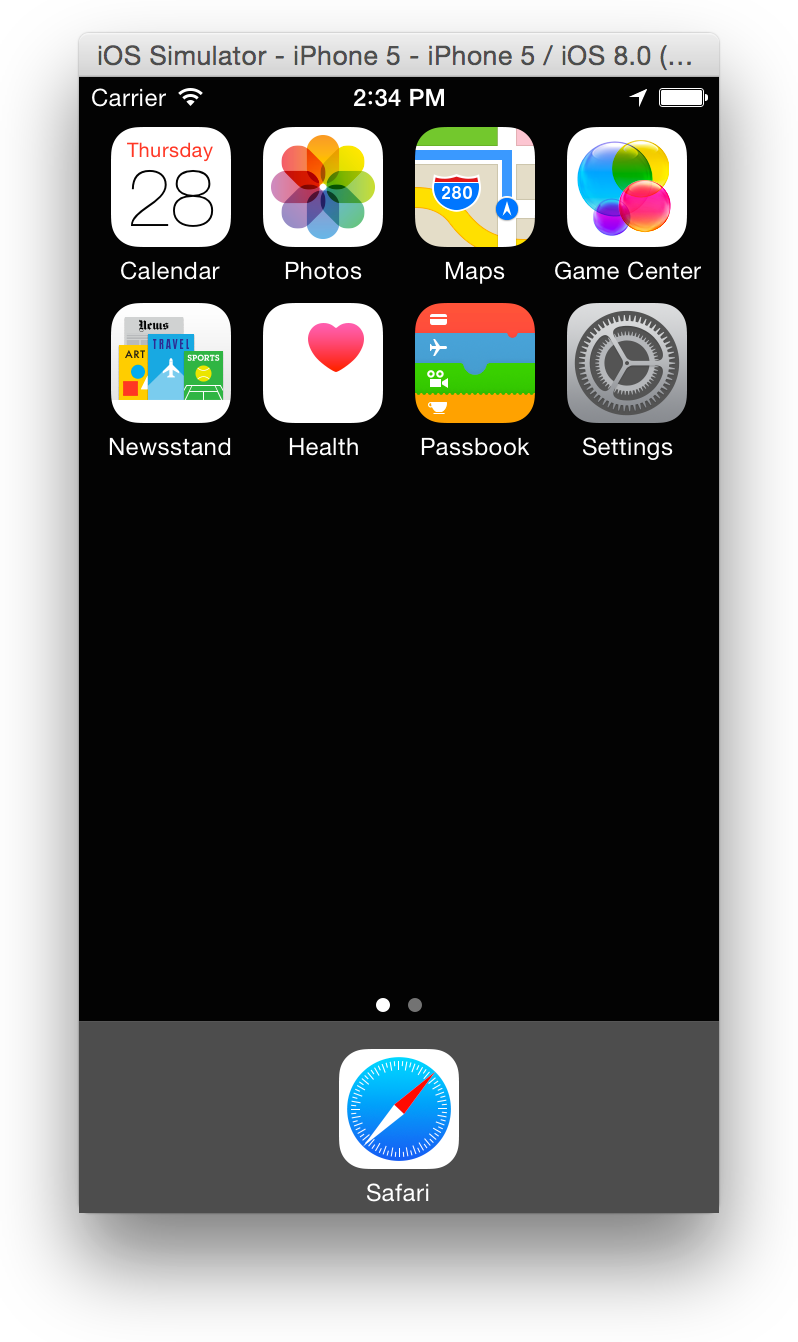
1.iPhone emulator for PC. There is a growing demand for iPhone emulators for pc so that it creates an environment to run the iOS applications on PC. It is popular because it lets you use all the games and applications originally designed for iPhone to be accessible over PC. Sep 14, 2018 iOS emulator is useful for running iOS or iPhone applications that are not compatible with the PC operating system. For example, you cannot run Android apps on windows or MAC because the operating systems differ. But we have emulators like BlueStacks which will create a virtual environment for running Android apps on windows. Similarly, there. Dec 24, 2019 What’s an Emulator? This is a piece of software, which lets a computer system act like another computer system. For instance, in this case, where we want to run iPhone apps on Mac/Windows, the emulator app will function as an iOS system that can be installed on the Mac/Windows laptop, with apps from Store now installed on this emulator. While there are tons of worthy Android emulators out there, such solutions for running iOS apps on Windows and Mac aren’t common. To help you out, I’ve curated a list of the best iOS emulators.
Important:The information in this document is deprecated in Xcode 9. Sonic unleashed 2d pc. For Xcode 9 and later, see Simulator Help by choosing Help > Simulator Help in Simulator.
Important The information in this document is deprecated in Xcode 9. For Xcode 9 and later, see Simulator Help by choosing Help > Simulator Help in Simulator.
Simulator allows you to rapidly prototype and test builds of your app during the development process. Installed as part of the Xcode tools, Simulator runs on your Mac and behaves like a standard Mac app while simulating an iPhone, iPad, Apple Watch, or Apple TV environment. Think of the simulator as a preliminary testing tool to use before testing your app on an actual device.
Simulator enables you to simulate iOS, watchOS, and tvOS devices running current and some legacy operating systems. Each combination of a simulated device and software version is considered its own simulation environment, independent of the others, with its own settings and files. These settings and files exist on every device you test within a simulation environment.
At a Glance
By simulating the operation of your app in Simulator, you can:
Find major problems in your app during design and early testing
Test your app using developer tools that are available only for Simulator
Learn about the Xcode development experience and the iOS development environment before becoming a member of the iOS Developer Program
This guide walks you through Simulator, starting with the basics of how to use it and moving on to the tools found within the simulator that can assist you in testing and debugging your apps.
Organization of This Document
Can You Get An Emulator On Mac
Read the following chapters to learn how to use Simulator:

Getting Started in Simulator, to understand the functionality of Simulator, and gain a working knowledge of the various ways to launch it
Interacting with Simulator, to learn about the various ways of interacting with Simulator, including taking screenshots and changing the scale of simulated devices
Interacting with iOS and watchOS, to learn about the specific ways of interacting with simulated iOS and watchOS devices, including gestures and hardware manipulation
Interacting with tvOS, to learn about the specific ways of interacting with tvOS, including using the focus-based user interface and using external remotes with Simulator
Testing and Debugging in Simulator, to understand the tools available within Simulator to assist you with testing and debugging your apps
Customizing Your Simulator Experience with Xcode Schemes, to learn about additional ways to customize your Simulator experience through Xcode schemes
See Also
Start Iphone Emulator Mac Download
Apple provides these related documents that you may find helpful:
To learn the basics of developing iOS apps, see Start Developing iOS Apps (Swift).
To learn about the basics of developing watchOS apps, see App Programming Guide for watchOS.
To learn more about how you can customize your development experience within Xcode, see Xcode Overview.
To learn about the process of testing your app on a device, submitting it to the App Store, and distributing it, see App Distribution Quick Start.
Copyright © 2018 Apple Inc. All Rights Reserved. Terms of Use | Privacy Policy | Updated: 2018-02-15